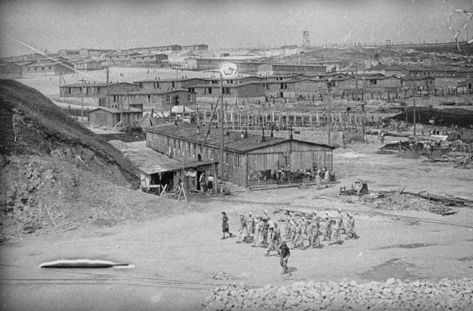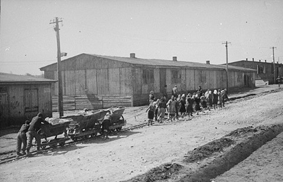Plaszow (Poland)

General view of the camp

General view of the camp
The camp of Plaszow was originally designed to be a work camp. However, like many other Nazi camps, shortages of food existed, prisoners starved or were worked to death, or summarily shot for no reason. The camp had been opened in December 1942. More than 150,000 civilians were held prisoner in Plaszow.
One use of slave labor was to obliterate all trace of earlier mass murders. At Himmler's instigation, a series of special units, known collectively as Unit 10051, were forced to dig up the putrefied corpses of those slain, to burn them, and scatter the ashes. This work took nearly two years and involved exhuming more than two million corpses.At Plaszow, in January 1945 a Unit 10051 was forced to exhume 9,000 bodies from 11 mass graves.
Other units, working at different times at the murder sites, were themselves murdered once their work was done. The SS wanted no trace to survive either of their crimes, or of the slave laborers who were being forced to hide them.

Kommando in Plaszow.
The conditions of life in this camp were made dreadful by the SS commander of the camp Amon Goeth . A prisoner in Plaszow was very lucky if he could survive in this camp more than four weeks. After the liberation, commander Amon Goeth had been turned over to the Polish officials, tried, sentenced to death and hanged. The camp shown in Spielberg's film "Schindler's List" is the exact description of Plaszow. Life for the inmates was usually short and miserable.
As the Russian forces advanced further and further westward, the Germans began the systematic evacuation of the slave labor camps in their path. From the camp at Plaszow, many hundreds were sent to Auschwitz, others westward to Mauthausen and Flossenburg on January 18th, 1945, the camp was evacuated by Death Marches, during which thousands of prisoners died from starvation, disease or were shot if they were too weak to walk.. The last prisoners were transferred to Germany on January 16th, 1945.